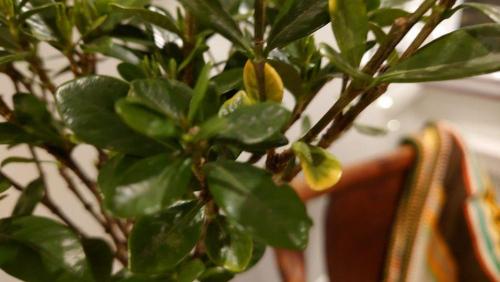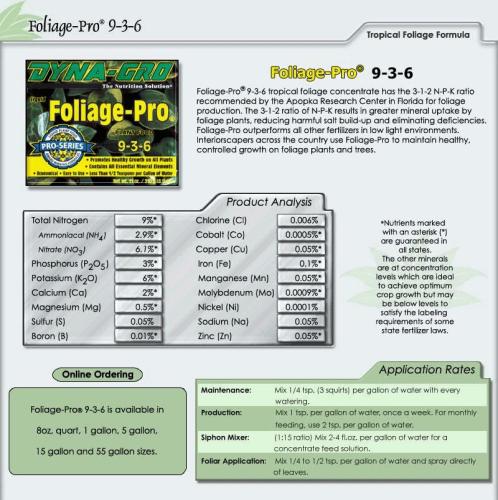We water when the soil is dry or if a plant is meant to be watered in specific ways then we follow those general instructions. If a plant is in a container deeper than about 5", one of the most reliable methods of checking a planting's need for water is using a 'tell' (more reliable than a 'moisture meter'. You can use a bamboo skewer in a pinch, but a wooden dowel rod of about 5/16" (75-85mm) works better. They usually come 48" (120cm) long and can usually be cut in half or in several pieces, depending on how deep your pots are. Sharpen both ends of each tell in a pencil sharpener and slightly blunt the tip so it's about the diameter of the head on a straight pin. Push the wooden tell deep into the soil - all the way to the bottom of the pot. Don't worry, it won't harm the root system. If the plant is quite root-bound, you might need to try several places until you find one where you can push it all the way to the pot's bottom. Leave it a few seconds, then withdraw it and inspect the tip for moisture. For most plantings, withhold water until the tell's tip comes out nearly dry. If you see signs of wilting, adjust the interval between waterings so drought stress isn't a recurring issue.
We have a probe to know what the state of our soil is. Perhaps you're already using a "tell"?
What I meant by the fertiliser comment is that when we use fertiliser, we use a regular fertiliser product and use it as per instructions. Not that we use it each time. The fertiliser is 24-8-16. 24-8-16 is a 3:1:2 ratio fertilizer. If you had to choose 1 fertilizer for all your plants, a 3:1:2 ratio like 24-8-16, 12-4-8, or 9-3-6 (what I use) would be at the top of a list of best choices. You should know that your fertilizer probably doesn't contain Ca or Mg, and is likely missing more than 1 micronutrient. The FP 9-3-6 I mentioned above is a better product (contains the nutrients lacking in the MG products), but the product you're using is not so far off the mark that you should expect problems resultant of its use.
We water once a week because we had read on several sites that that was good for thujas and out of fear of overwatering because they are in shade. The soil was always dry when we went to water. While odds favor over-watering as the issue, your description of how you approach watering leads me to think you're under-watering. Watering intervals are not constant. IOW, they vary week to week, so you should be watering on an 'as needed' basis. The "tell" I described is a very effective tool that will help you keep watering intervals appropriate, if you make using it a part of your care regimen. BTW - Thuja prefers a full sun position.
[We use] Miracle Grow's "Plant Food" 24-8-16. We follow the instructions. OK. the frequency with which you fertilize is best tied to the number of times you've watered as opposed to the calendar. I have many plants in the Thuja genus, all of which I water at production levels when temperatures allow. I fertilize weekly, which ends up being about every 3rd or 4th watering, depending on what the weather is like.
To keep track of what plant needs fertilizing, drop a marble/ bottle cap/ button/ other object in the pot when you water. When you're about to drop in the 4th object, collect the 3 objects already in the pot, fertilize, then repeat the cycle.
Flush the soil ..... can you tell us a fool proof way to do this? Is it pouring water with a watering can until all the soil is drenched and then letting it run dry? There are 2 ways to deal with flushing the soil, depending on the grower's watering habits. 1) If the grower has been watering in small amounts so very little or no water exits the drain hole(s), slowly pour a volume of room temperature water equal to about 10x the volume of the pot the plant is in through the soil. This will flush out most of the dissolved solids/ salts from the soil and reset fertility levels to '0'. You can fertilize immediately after flushing the medium or wait a day or two. You can flush the soil any time, but don't start fertilizing until you see new growth or two weeks has passed since you flushed. You won't likely see new growth now because your plant started slowing primary growth (branch extension + more leaves and branches) about 3 months ago and is now storing energy reserves in new secondary growth cells which cause thickening of branches/ stems/ roots. If you use only the appearance of new growth as the bellwether that determines when you'll water, it would be a problem, nutritionally speaking. 2) If you HAVE been flushing the soil regularly, so at least 20% of the water used to soak the entire soil column exits the drain hole, you can simply continue that practice.
Gardenia leaves have stopped turning yellow but there are some brown spots in the buds and leaves. Some leaves dropping.
Thuja - still dry in patches with browning. Sometimes it's difficult to pinpoint what the underlying cause of problems might be. In most cases, the stress of an unhealthy root system will be made manifest in a myriad of symptoms which can be caused by a variety of factors. When that occurs, it's often helpful to examine your care regimen or compare it to a regimen that is known to be very effective. I'll link you to a thread here that discusses practices that will help you be a more successful container gardener. Let me know if anything you're doing seems like a sharp contrast to current care practices.
The thread "An Overview of Good Growing Practices" in
Houseplants forum
Worth noting: we feel that things started to turn bad when we topped the pots with a layer of the compost that is made by the gardener of our building ..... Hard to know if that's a problem. Do they use chemicals on the premises' lawn and were they included in the 'compost'?
Al



